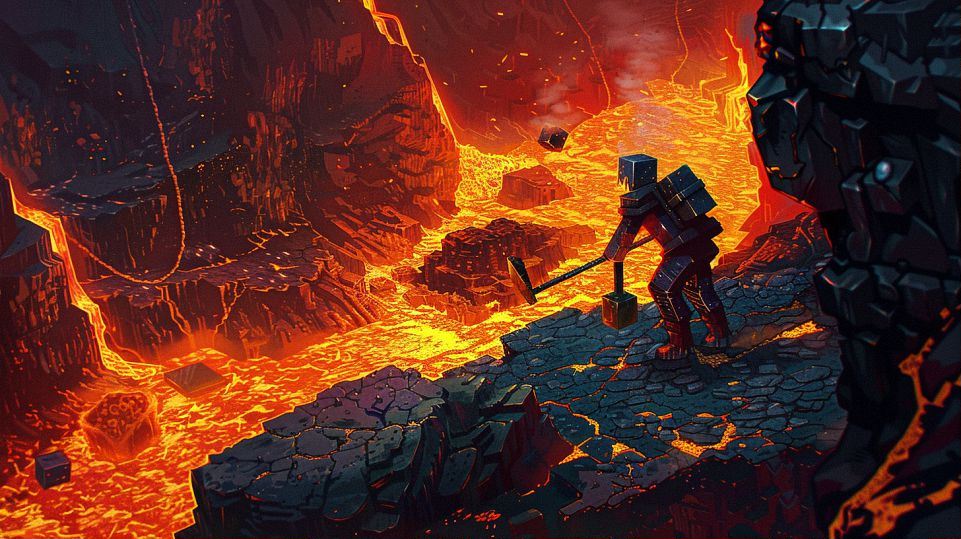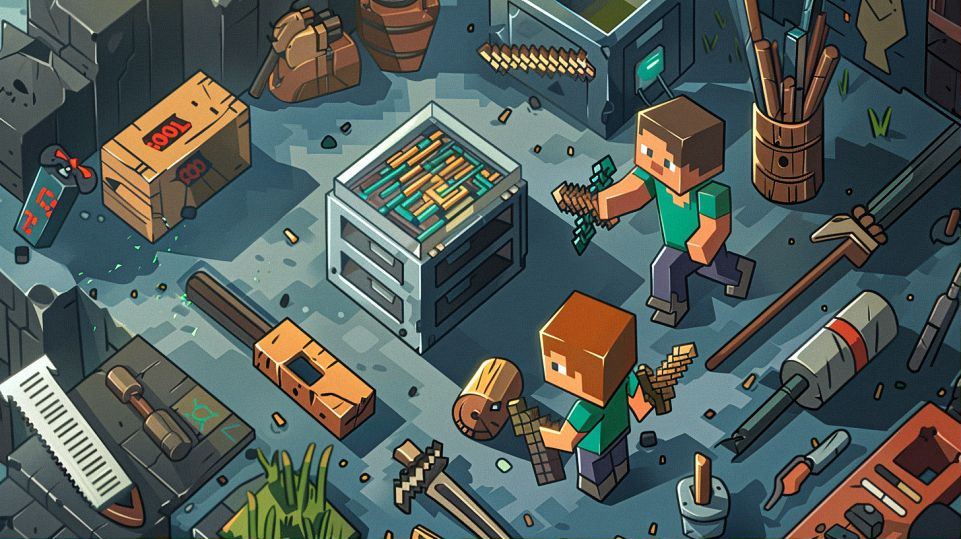How to Play Minecraft: Ultimate Beginner’s Guide

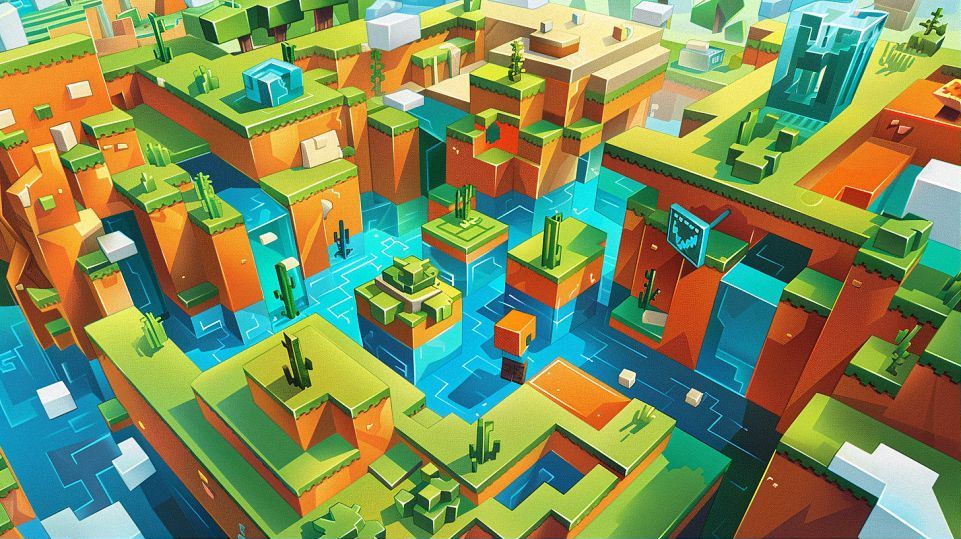
Getting Started with Minecraft
Installing Minecraft: Java Edition vs. Bedrock Edition
When learning how to play Minecraft, the first step is choosing and installing the right version of the game. Minecraft offers two main editions: Java Edition and Bedrock Edition, each with unique features and compatibility.
Contents
ToggleJava Edition is the original version of Minecraft, and it’s available for PC, Mac, and Linux. One major perk is its extensive modding community. Players can add mods to enhance gameplay, change the game’s look, or introduce new challenges. Java Edition also supports custom servers, providing a rich multiplayer experience. It’s important to note that Java Edition requires a bit more processing power and might not run as smoothly on older computers.
Bedrock Edition, on the other hand, is designed for cross-platform play. Whether you’re on a console, PC, or mobile device, you can play with friends regardless of their platform. Bedrock Edition also offers smoother gameplay on lower-end devices and includes some exclusive features like the marketplace where you can purchase skins, texture packs, and worlds. However, modding is more limited compared to Java Edition.
To install either edition, head to the official Minecraft website. For Java Edition, download the launcher and follow the installation prompts. For Bedrock Edition, you can find it on various app stores depending on your device (Google Play, App Store, Microsoft Store, etc.).
Creating Your First World: Survival Mode vs. Creative Mode
Once you have Minecraft installed, the next step is creating your first world. Here, you’ll decide between Survival Mode and Creative Mode, each offering a distinct experience.
Survival Mode is where the real adventure begins. You start with nothing and must gather resources to build, craft, and survive. The game has a day-night cycle, and at night, monsters like zombies and skeletons come out, adding an extra layer of challenge. Key elements include managing your health and hunger, mining for valuable resources like iron and diamonds, and building shelters to protect yourself from monsters. Survival Mode encourages strategic thinking and careful planning.
Creative Mode, in contrast, is perfect for players who want to unleash their imagination without limits. In this mode, you have unlimited resources, can fly, and are invincible. There’s no need to worry about health or hunger. It’s a sandbox experience where you can build anything from simple houses to massive castles or intricate redstone contraptions. Creative Mode is ideal for players who enjoy building and experimenting without the survival elements.
To create a new world, open Minecraft, click on “Singleplayer,” then “Create New World.” Choose your game mode, name your world, and adjust any settings or preferences before clicking “Create New World.”
Basic Controls and User Interface
Understanding the basic controls and user interface is crucial when you’re learning how to play Minecraft. Let’s break it down:
Movement and Actions:
- WASD Keys: Move forward, backward, and sideways.
- Spacebar: Jump. Double-tap for flying in Creative Mode.
- Shift: Sneak/crouch. Useful for preventing falls off ledges.
- Mouse: Look around. Left-click to break blocks, right-click to place them.
- E: Opens the inventory where you can manage items.
- 1-9 Keys: Select items in your hotbar.
User Interface:
- Hotbar: The quick-access bar at the bottom of the screen holding your tools and blocks.
- Health and Hunger Bars: Located above the hotbar. Keeping an eye on these is vital in Survival Mode.
- Experience Bar: Below the health and hunger bars, showing your XP level which is used for enchanting items.
- Crafting Grid: In the inventory, this 2×2 grid is used for simple recipes. A full crafting table expands this to 3×3.
Additional Tips:
- Press F3: View detailed game information, including coordinates and system performance stats.
- Chat Commands: In multiplayer or cheats-enabled worlds, you can use commands like
/time set dayto change the time of day.
Getting the hang of these basics will set you on the path to becoming a Minecraft pro. With a bit of practice, navigating your world and managing your resources will become second nature. Now, it’s time to dive into your first Minecraft adventure!
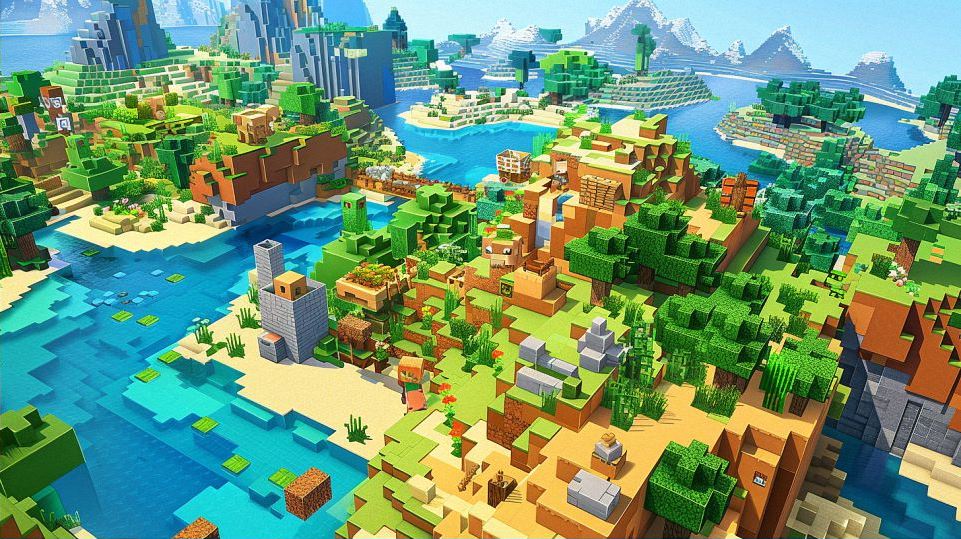
Surviving and Thriving in Minecraft
Gathering Resources: Wood, Stone, and Minerals
In Minecraft, gathering resources is your first critical step to survival. When you spawn, look around for trees because wood is your primary building block. Punch trees to collect wood logs, then open your inventory and craft these logs into planks. You’ll need these planks for crafting tools and building shelters.
After gathering wood, it’s time to move on to stone. Stone tools are more durable than wooden ones. Locate a patch of exposed stone or dig down a few blocks. Use your wooden pickaxe to mine stone and collect cobblestones. With cobblestone, you can craft stronger tools, like stone pickaxes, which are essential for mining harder materials.
Now, let’s talk minerals. Iron, coal, and diamonds are vital for crafting advanced tools and weapons. You’ll find iron ore typically between layers 5 and 54. Smelt iron ore in a furnace to get iron ingots. Coal is found near the surface and provides fuel for your furnace. Diamonds, the most precious resource, are found deep underground, between layers 2 and 16. Use your iron pickaxe to mine diamonds.
In summary:
- Wood: Found in trees, used for crafting basic tools and building.
- Stone: Found underground, essential for crafting stronger tools.
- Minerals: Includes iron (layers 5-54), coal (near the surface), and diamonds (layers 2-16).
Crafting Essentials: Tools, Weapons, and Armor
Crafting is a core mechanic in Minecraft, transforming raw materials into useful items. Start by crafting a crafting table with four wooden planks. Place it down and right-click to open the crafting grid.
Tools are essential for efficient resource gathering:
- Pickaxes: For mining stone and ores.
- Axes: For chopping wood quickly.
- Shovels: For digging dirt, sand, and gravel.
- Hoes: For farming.
Craft tools by placing materials (wood, stone, iron, or diamonds) and sticks in the crafting grid. For example, a stone pickaxe requires three cobblestones and two sticks.
Weapons are necessary for defense against monsters:
- Swords: Effective for melee combat.
- Bows and Arrows: Useful for ranged attacks.
Armor provides protection and is crafted from iron, diamonds, or leather:
- Helmet: Protects your head.
- Chestplate: Shields your torso.
- Leggings: Guards your legs.
- Boots: Defends your feet.
Crafting these essentials early on enhances your survival chances, allowing you to gather resources and fight off threats more effectively.
Building Your First Shelter: Basic Designs and Materials
As night falls in Minecraft, you need a safe place to avoid monsters. Your first shelter doesn’t have to be fancy, it just needs to keep you safe. Start by selecting a location near your spawn point, ideally close to resources like trees and stone.
Materials:
- Wooden Planks: Easy to gather and build with.
- Cobblestone: More durable than wood.
Basic Shelter Design:
- Foundation: Lay out a small area, around 5×5 blocks.
- Walls: Build walls at least three blocks high using wood or cobblestone.
- Roof: Cover the top to keep out monsters.
- Door: Craft a door using wooden planks and place it in an opening.
For added security, consider crafting a bed with three wool blocks and three wooden planks. Sleeping in a bed sets your spawn point and skips the night.
Managing Health and Hunger: Food Sources and Farming
Keeping an eye on your health and hunger bars is crucial in Survival Mode. Health regenerates slowly if your hunger bar is full, so maintaining a steady food supply is essential.
Food Sources:
- Animals: Chickens, cows, pigs, and sheep provide meat. Cook the meat in a furnace for better nourishment.
- Crops: Wheat, carrots, and potatoes can be grown and harvested.
Farming:
- Hoe: Craft a hoe to till soil.
- Seeds: Plant seeds in tilled soil near water.
- Growth: Wait for crops to grow and harvest them.
Fishing is another reliable food source. Craft a fishing rod with sticks and string, then cast it into water to catch fish.
In summary:
- Gather resources: Start with wood, move to stone, and then seek out minerals.
- Craft essential tools: Build tools, weapons, and armor to enhance your abilities.
- Build a shelter: Create a safe place to survive the night.
- Manage health and hunger: Keep a steady supply of food through hunting and farming.
Mastering these basics ensures you’ll survive and thrive in the exciting world of Minecraft!
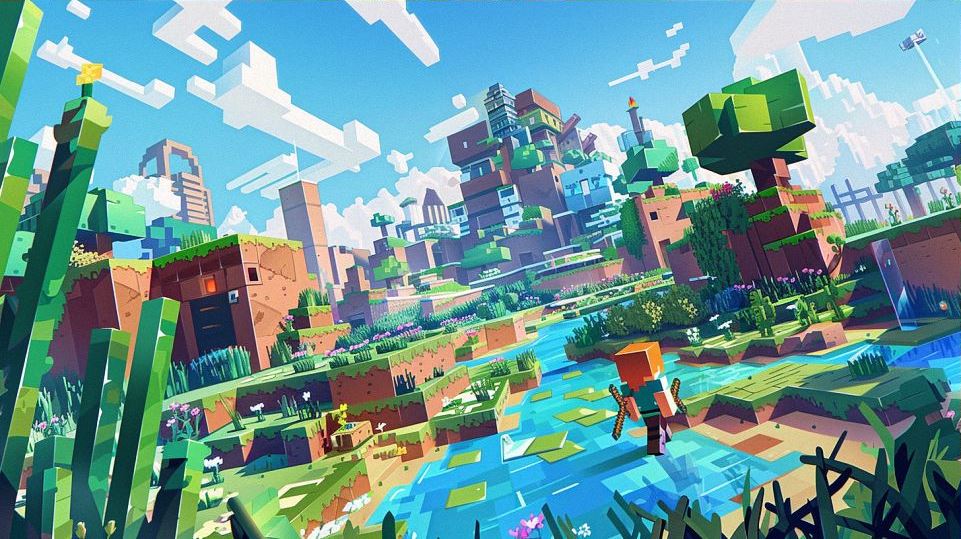
Exploring Advanced Gameplay
Redstone Basics: Circuits and Contraptions
Redstone is Minecraft’s equivalent of electrical wiring, and it opens up a world of possibilities for creating circuits and contraptions. Understanding the basics of redstone can transform your gameplay, allowing you to build anything from simple doors to complex machines.
Redstone Components:
- Redstone Dust: The core component that transmits power.
- Redstone Torches: Provide a constant power source.
- Redstone Repeaters: Extend signal range and introduce delays.
- Redstone Comparators: Compare and maintain signal strength.
- Levers, Buttons, and Pressure Plates: Act as switches to control circuits.
Simple Circuits:
- Basic Door Mechanism: Place a lever next to a door and connect it with redstone dust to open and close it.
- Automatic Lights: Use daylight sensors to turn on lights at night.
Complex Contraptions:
- Hidden Doors: Combine pistons and redstone to create secret entrances.
- Traps: Use tripwire hooks and dispensers to create traps for mobs or other players.
- Farms: Automate harvesting crops with pistons and water.
Learning redstone may seem daunting at first, but start small and gradually experiment with more complex designs. Watching tutorials and practicing can significantly enhance your skills.
Enchantments and Potions: Enhancing Your Gear
Enchantments and potions can significantly boost your survival odds and combat effectiveness in Minecraft. Let’s delve into how to enhance your gear.
Enchantments:
- Enchanting Table: Craft an enchanting table with obsidian, diamonds, and a book. Place it and surround it with bookshelves to increase its power.
- Common Enchantments:
- Sharpness: Increases melee weapon damage.
- Protection: Reduces damage taken on armor.
- Efficiency: Increases mining speed on tools.
- Unbreaking: Increases item durability.
To enchant an item, place it on the enchanting table along with lapis lazuli and select from the available enchantments. Higher levels require more experience points and stronger enchantments.
Potions:
- Brewing Stand: Craft with blaze rods and cobblestone. Use it to brew potions.
- Common Potions:
- Healing: Instantly restores health.
- Swiftness: Increases speed.
- Strength: Enhances melee attack power.
- Fire Resistance: Provides immunity to fire and lava.
Potions are brewed by placing water bottles in the brewing stand and adding ingredients like nether wart, blaze powder, and other items. Experiment with different combinations to discover all the potion effects.
The Nether and The End: Dimensions and Boss Battles
Minecraft isn’t just about the Overworld, it also features other dimensions like the Nether and the End, each with unique challenges and rewards.
The Nether:
- Portal: Create a portal with obsidian and ignite it with flint and steel.
- Environment: A fiery dimension filled with lava, dangerous mobs, and rare resources like quartz and glowstone.
- Nether Fortresses: Home to blaze spawners and nether wart, essential for brewing potions.
- Ghasts and Piglins: Hostile mobs that pose significant threats. Be prepared with strong armor and weapons.
The End:
- End Portal: Located in strongholds, requires Eyes of Ender to activate.
- Ender Dragon: The final boss, located in the End. Destroy the End Crystals on top of obsidian pillars to prevent it from regenerating health.
- End Cities: After defeating the dragon, explore End Cities for valuable loot and Elytra, wings that allow you to glide.
Defeating the Ender Dragon is a significant achievement, marking your progress as a seasoned Minecraft player.
Multiplayer Adventures: Servers and Online Play
Playing Minecraft with friends or joining a server adds a whole new dimension to the game. Whether you’re building together, competing, or exploring vast worlds, multiplayer adventures are incredibly fun.
Joining a Server:
- Finding Servers: Websites like Minecraft Server List provide thousands of servers to choose from.
- Server Types:
- Survival: Standard survival gameplay with friends.
- Creative: Build without limits.
- Mini-games: Play games like SkyWars, BedWars, and more.
- Role-playing: Engage in role-playing scenarios with other players.
Setting Up Your Own Server:
- Hosting Options: Use Mojang’s Realms for a simple setup, or go for dedicated hosting services for more control.
- Customization: Install plugins and mods to customize your server’s experience.
Playing with Friends:
- LAN: Open your world to local players on the same network.
- Online Multiplayer: Invite friends through the game’s interface, ensuring everyone is on the same version.
Multiplayer gameplay allows for shared creativity and collaboration, making Minecraft an even richer experience.
By mastering redstone, enchantments, potions, exploring dimensions, and diving into multiplayer, you’ll transform from a novice into a Minecraft expert, ready to tackle any challenge the game throws your way. Happy mining!

